Navigation
Install the app
How to install the app on iOS
Follow along with the video below to see how to install our site as a web app on your home screen.

Note: This feature currently requires accessing the site using the built-in Safari browser.
More options
You are using an out of date browser. It may not display this or other websites correctly.
You should upgrade or use an alternative browser.
You should upgrade or use an alternative browser.
Do Fisheye Prime lenses need IS? Will it make a big difference?
- Thread starter FamilyID
- Start date
- Joined
- Mar 8, 2011
- Messages
- 25,160
- Reaction score
- 9,010
- Location
- Iowa
- Website
- pixels.com
- Can others edit my Photos
- Photos NOT OK to edit
Many times, even ultra-wide lenses don't have IS. When you get into fish-eye territory, you have to really work to blur things.
Primes are generally faster than zooms.
Real world facts: Primes have one focal length, zooms have more than one.
Primes are generally faster than zooms.
Real world facts: Primes have one focal length, zooms have more than one.
- Joined
- Apr 9, 2009
- Messages
- 41,401
- Reaction score
- 5,706
- Location
- Iowa
- Website
- kharrodphotography.blogspot.com
- Can others edit my Photos
- Photos OK to edit
No and No.Do Fisheye Prime lenses need IS? Will it make a big difference?
Image Stabilization generally needs to be turned off.
Good camera holding technique usually suffices instead of IS/VR/OS etc until lens focal length goes beyound 200 mm.
FamilyID
TPF Noob!
- Joined
- Aug 27, 2013
- Messages
- 70
- Reaction score
- 1
- Location
- Canada
- Can others edit my Photos
- Photos NOT OK to edit
No and No.Do Fisheye Prime lenses need IS? Will it make a big difference?
Image Stabilization generally needs to be turned off.
Good camera holding technique usually suffices instead of IS/VR/OS etc until lens focal length goes beyound 200 mm.
Thank you both.
Does this mean that 70-200mm doesn't really benefit from the IS.
I'm asking about the 70-200mm f/2.8 vs f/2.8 IS. I'm thinking about getting primes, since the optical performance is amazing on a lot of them.
Gavjenks
TPF Noob!
- Joined
- May 9, 2013
- Messages
- 2,976
- Reaction score
- 588
- Location
- Iowa City, IA
- Can others edit my Photos
- Photos OK to edit
Yes, it CAN matter, although in more specialized situations tan with a more normal focal length.
Image stabilization is useful at EVERY focal length, in the right circumstances.
At 200mm, you're going to want it for almost everything other than shots of erratically moving subjects. For still subjects, it will get you from blurry shots at 1/400th of a second occasionally to almost never having blurry shots at 1/60th. Which is huge.
At 15mm, however, image stabilization still offers about the same increase in stability, it's just that the difference is shifted way down. Instead of 1/400th vs. 1/60th it becomes more like 1/20th versus 1/3rd of a second
Therefore, it is more specialized, because rarely do we really have a desire to shoot 1/3rd of a second handheld. But if you're doing a fisheye of a waterfall, for instance, that image stabilization can be quite handy, as it can allow you to get some pretty significant blur on the water without a tripod while still keeping rocks acceptable sharp at 15mm. Whether or not you're willing to PAY more for it, though, depends on how often you're going to be in situations like that.
Good holding technique should always be practiced, IS or not. They are not mutually exclusive. In fact, they complement one another and add together in their effects.
As you go lower in focal length, IS still improves your possible shutter speed by about 2-3 stops. It's simply that this difference occurs lower and lower on the scale.
So yeah sure, if you refuse to ever shoot handheld at lower than 1/200th of a second for some reason, then IS will be useless to you below 200mm. If, however, you define your creative boundaries by what is actually physically possible, rather than by arbitrary limits, then this technology will open doors for you on any lens.
It's just that the benefits tend to get more esoteric the wider you go.
Image stabilization is useful at EVERY focal length, in the right circumstances.
At 200mm, you're going to want it for almost everything other than shots of erratically moving subjects. For still subjects, it will get you from blurry shots at 1/400th of a second occasionally to almost never having blurry shots at 1/60th. Which is huge.
At 15mm, however, image stabilization still offers about the same increase in stability, it's just that the difference is shifted way down. Instead of 1/400th vs. 1/60th it becomes more like 1/20th versus 1/3rd of a second
Therefore, it is more specialized, because rarely do we really have a desire to shoot 1/3rd of a second handheld. But if you're doing a fisheye of a waterfall, for instance, that image stabilization can be quite handy, as it can allow you to get some pretty significant blur on the water without a tripod while still keeping rocks acceptable sharp at 15mm. Whether or not you're willing to PAY more for it, though, depends on how often you're going to be in situations like that.
This is a completely arbitrary cutoff and statement that makes assumptions about shutter speed that are not necessarily true for a given person's shooting style.Good camera holding technique usually suffices instead of IS/VR/OS etc until lens focal length goes beyound 200 mm.
Good holding technique should always be practiced, IS or not. They are not mutually exclusive. In fact, they complement one another and add together in their effects.
As you go lower in focal length, IS still improves your possible shutter speed by about 2-3 stops. It's simply that this difference occurs lower and lower on the scale.
So yeah sure, if you refuse to ever shoot handheld at lower than 1/200th of a second for some reason, then IS will be useless to you below 200mm. If, however, you define your creative boundaries by what is actually physically possible, rather than by arbitrary limits, then this technology will open doors for you on any lens.
It's just that the benefits tend to get more esoteric the wider you go.
Last edited:
Gavjenks
TPF Noob!
- Joined
- May 9, 2013
- Messages
- 2,976
- Reaction score
- 588
- Location
- Iowa City, IA
- Can others edit my Photos
- Photos OK to edit
The reason both of these are popular lenses has more to do with the usefulness of this zoom range for sports. If you're shooting sports with very in-motion subjects, then IS isn't very useful, because IS doesn't freeze subject motion, only hand shake. So why waste money on IS you would never use? Same goes for studio portraits, where you control the light to be as bright as it needs to be for the shutter speed you like.I'm asking about the 70-200mm f/2.8 vs f/2.8 IS. I'm thinking about getting primes, since the optical performance is amazing on a lot of them.
If, on the other hand, you're using the lens for something like low light naturally lit portraits or landscapes or whatnot, then it can be quite useful.
- Joined
- Mar 8, 2011
- Messages
- 25,160
- Reaction score
- 9,010
- Location
- Iowa
- Website
- pixels.com
- Can others edit my Photos
- Photos NOT OK to edit
Thanks for the info!
Do you use primes or zooms?
Both.
amolitor
TPF Noob!
- Joined
- May 18, 2012
- Messages
- 6,320
- Reaction score
- 2,131
- Location
- Virginia
- Can others edit my Photos
- Photos OK to edit
People have a distressing tendency to think of sharpness-enhancing things as not doing anything after a certain point.
It's not true. Sharpness-adding-things (tripods, IS, faster shutter speeds, better lenses, more pixels, etc etc etc) always add sharpness, except when they're removing sharpness. IS systems are a little problematic since they can take sharpness away as well as adding it.
Sometimes they're adding negligible amounts of sharpness, but unless they're in some mode where they're actually taking sharpness away, they're adding it.
It's not true. Sharpness-adding-things (tripods, IS, faster shutter speeds, better lenses, more pixels, etc etc etc) always add sharpness, except when they're removing sharpness. IS systems are a little problematic since they can take sharpness away as well as adding it.
Sometimes they're adding negligible amounts of sharpness, but unless they're in some mode where they're actually taking sharpness away, they're adding it.
FamilyID
TPF Noob!
- Joined
- Aug 27, 2013
- Messages
- 70
- Reaction score
- 1
- Location
- Canada
- Can others edit my Photos
- Photos NOT OK to edit
I'm a little bit confused.People have a distressing tendency to think of sharpness-enhancing things as not doing anything after a certain point.
It's not true. Sharpness-adding-things (tripods, IS, faster shutter speeds, better lenses, more pixels, etc etc etc) always add sharpness, except when they're removing sharpness. IS systems are a little problematic since they can take sharpness away as well as adding it.
Sometimes they're adding negligible amounts of sharpness, but unless they're in some mode where they're actually taking sharpness away, they're adding it.
- Joined
- Apr 9, 2009
- Messages
- 41,401
- Reaction score
- 5,706
- Location
- Iowa
- Website
- kharrodphotography.blogspot.com
- Can others edit my Photos
- Photos OK to edit
This article - Nikon VR explained - is specifically about Nikon VR, but most of what it says it applies to all in-the-lens image stabilization systems.
- Joined
- Mar 8, 2011
- Messages
- 25,160
- Reaction score
- 9,010
- Location
- Iowa
- Website
- pixels.com
- Can others edit my Photos
- Photos NOT OK to edit
Which ones?Thanks for the info!
Do you use primes or zooms?
Both.
Each with a purpose, if you don't mind
My stable of lenses:
Peleng 8mm (circular fisheye) - for when life is viewed through a circle.
Nikkor 10.5mm (full-frame fisheye) - for when I want to get 'the whole picture'.
Tokina 17/3.5 SL - Dedicated for mast photography when shooting tethered.
Nikkor 17-35 2.8D (ultra-wide zoom) - For my 'serious work' requiring an ultrawide.
Nikkor 24-85 3.5-4.5G ('standard' zoom) - For my 'serious work' requiring 'normal' focal lengths.
Nikkor 24-200 3.5-5.6D ('street' zoom) - My 'walk-about, or 'street' lens.
Nikkor 28/2.8Ai - Dedicated for reversing on bellows for macro work.
Nikkor 50/1.8 D - for low-light shooting, all-around lens, and when sharpness is critical.
Nikkor 105 2.8D (Micro) - For short tele work, portraiture, and obviously macro work.
Nikkor 70-300 G (tele-zoom) - Sports, candids, street shooting.
Nikkor 500/8 N (Long tele) - Sports, wildlife.
Sigma 600/8 (Longer tele) - Sports, wildlife.
Celestron 2000/8 (Very long tele) - Astro, wildlife, and........ he he....'wild life'.
Only two (24-85 and 70-300) have VR, and I rarely turn it on.
FamilyID
TPF Noob!
- Joined
- Aug 27, 2013
- Messages
- 70
- Reaction score
- 1
- Location
- Canada
- Can others edit my Photos
- Photos NOT OK to edit
How many do you bring when you travel?
My stable of lenses:
Peleng 8mm (circular fisheye) - for when life is viewed through a circle.
Nikkor 10.5mm (full-frame fisheye) - for when I want to get 'the whole picture'.
Tokina 17/3.5 SL - Dedicated for mast photography when shooting tethered.
Nikkor 17-35 2.8D (ultra-wide zoom) - For my 'serious work' requiring an ultrawide.
Nikkor 24-85 3.5-4.5G ('standard' zoom) - For my 'serious work' requiring 'normal' focal lengths.
Nikkor 24-200 3.5-5.6D ('street' zoom) - My 'walk-about, or 'street' lens.
Nikkor 28/2.8Ai - Dedicated for reversing on bellows for macro work.
Nikkor 50/1.8 D - for low-light shooting, all-around lens, and when sharpness is critical.
Nikkor 105 2.8D (Micro) - For short tele work, portraiture, and obviously macro work.
Nikkor 70-300 G (tele-zoom) - Sports, candids, street shooting.
Nikkor 500/8 N (Long tele) - Sports, wildlife.
Sigma 600/8 (Longer tele) - Sports, wildlife.
Celestron 2000/8 (Very long tele) - Astro, wildlife, and........ he he....'wild life'.
Only two (24-85 and 70-300) have VR, and I rarely turn it on.
Similar threads
- Replies
- 13
- Views
- 1K
New Topics
-
-
Instax Wide 300 Lens cover broken, not shutting properly
- Latest: PianoMan343
-
-

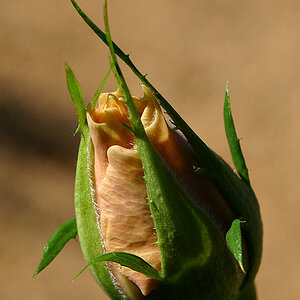
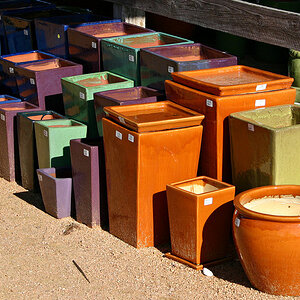
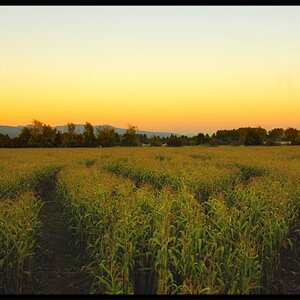
![[No title]](/data/xfmg/thumbnail/34/34144-52e7a5d3e3908ae808afeabfe86fffdc.jpg?1619736317)
![[No title]](/data/xfmg/thumbnail/35/35262-02f8eba4a2a92dbae0b55547bba80b4f.jpg?1619736968)
![[No title]](/data/xfmg/thumbnail/35/35870-e324e80cd11d99176357e12cd2ba3b8a.jpg?1619737196)
![[No title]](/data/xfmg/thumbnail/33/33906-2f9b24e4b1e1be07f68257916df0f2b3.jpg?1619736208)
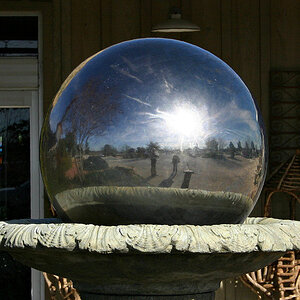
![[No title]](/data/xfmg/thumbnail/36/36393-86ce601930c671b92b6df002b7fcbd0b.jpg?1619737548)
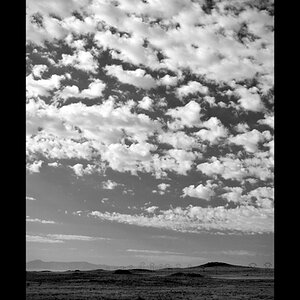
![[No title]](/data/xfmg/thumbnail/35/35265-c9ea3efd2c618a57ea136e63ad106880.jpg?1619736970)
![[No title]](/data/xfmg/thumbnail/42/42470-d80cbcbbacb42bbe46ac0a0f6fcb20e0.jpg?1619740193)